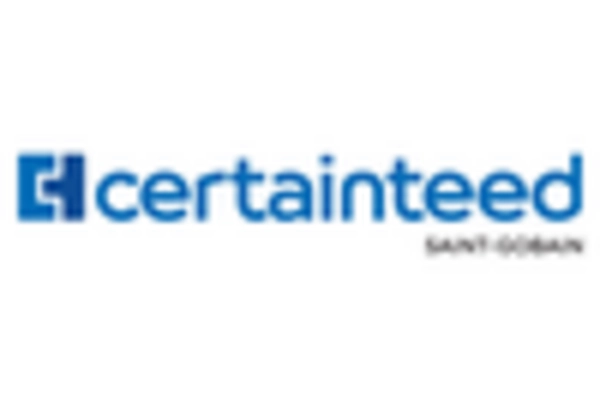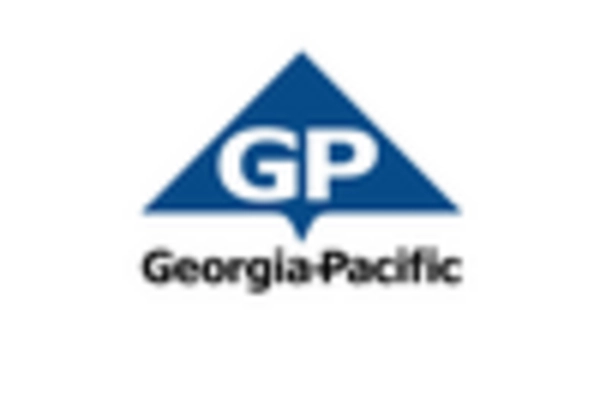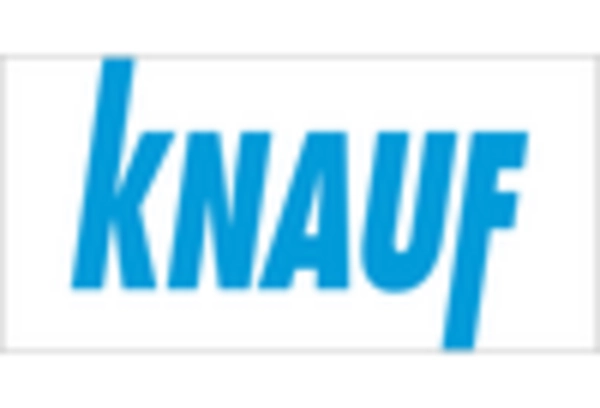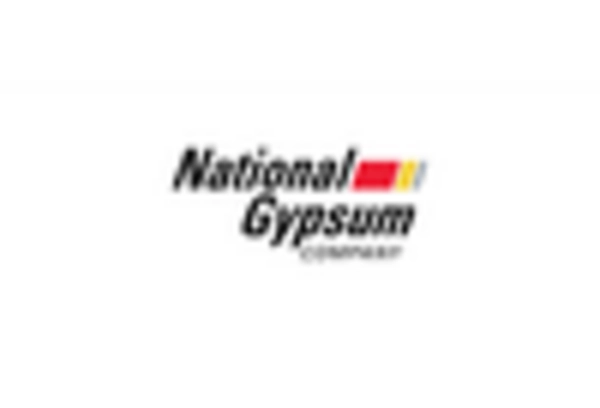Market Trends
Key Emerging Trends in the Joint Compound Market
The joint compound market is experiencing significant trends influenced by various factors impacting both supply and demand dynamics. One notable trend is the increasing demand for joint compounds in the construction and building materials industry. Joint compounds, also known as drywall mud or spackle, are essential for finishing drywall installations and repairing surface imperfections. As construction activity continues to grow globally, particularly in residential and commercial sectors, there is a rising demand for high-quality joint compounds that offer ease of application, superior adhesion, and smooth finish. This trend is driven by ongoing urbanization, infrastructure development, and renovation projects, which require reliable and efficient solutions for finishing interior walls and ceilings.
Another prominent trend in the joint compound market is the shift towards eco-friendly and low-VOC (volatile organic compound) formulations. With increasing awareness of indoor air quality and environmental sustainability, there is a growing demand for joint compounds that emit fewer harmful chemicals and contribute to healthier indoor environments. Manufacturers are responding to this trend by developing low-VOC and green building compliant joint compounds that meet stringent regulatory standards while delivering optimal performance and durability. This trend is driven by consumer preferences for sustainable building materials and green construction practices, as well as regulatory mandates promoting environmentally friendly products in the construction industry.
Furthermore, the market is witnessing technological advancements and product innovations aimed at improving the performance and versatility of joint compounds. Manufacturers are investing in research and development to develop lightweight joint compounds with enhanced workability, sag resistance, and sandability, allowing for faster and more efficient finishing of drywall surfaces. Additionally, there is a growing demand for specialty joint compounds tailored to specific applications such as high-humidity environments, fire-rated assemblies, and acoustic insulation. This trend is driven by the need for customized solutions that address the unique requirements of different construction projects and building codes.
The joint compound market is also influenced by shifting consumer preferences and buying behavior in the DIY (do-it-yourself) and home improvement sectors. With the rise of home renovation projects and DIY culture, there is an increasing demand for user-friendly joint compounds that are suitable for non-professional use. Manufacturers are responding to this trend by offering easy-to-use joint compound kits and pre-mixed formulations that require minimal preparation and expertise, enabling homeowners and DIY enthusiasts to achieve professional-looking results with minimal effort. This trend is driving growth in the consumer segment of the joint compound market and expanding the market reach to new demographics and distribution channels.
Moreover, the market is experiencing increased competition and consolidation among key players, leading to strategic partnerships, mergers, and acquisitions to strengthen market positions and expand product portfolios. As the industry becomes more consolidated, companies are focusing on innovation, efficiency, and market expansion to maintain competitiveness and drive growth. This trend is driving investments in research and development, as well as market expansion strategies to tap into emerging markets and untapped opportunities in the joint compound market.
On the supply side, the joint compound market is influenced by factors such as raw material availability, manufacturing processes, and distribution networks. Fluctuations in raw material prices, such as gypsum, polymers, and fillers, can impact production costs and pricing of joint compounds. Additionally, advancements in manufacturing technologies, such as automated mixing and packaging systems, are improving efficiency and reducing production lead times, allowing manufacturers to meet growing demand and maintain competitive pricing. This trend is driving investments in production capacity expansion and supply chain optimization to ensure reliable and timely delivery of joint compounds to customers.

















Leave a Comment